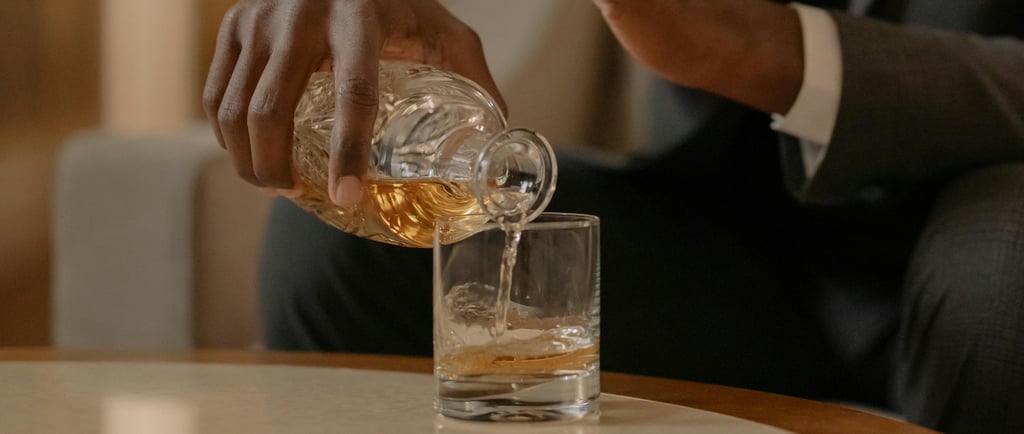The 7th edition of C² is coming soon. The energy multiplies. Stay tuned.
Single Malt vs. Blended Whisky: What's the Difference?
Explore the fascinating world of whisky, detailing its creation, the differences between single malt and blended varieties, and offering tips for choosing your perfect pour.
Dada Bartender and Jitendra Khater
6/23/20253 min read


"Whisky is for drinking, not for thinking." - Mark Twain
Whisky, a timeless elixir, is the product of an intricate alchemical dance between grains, water, yeast, and time. Born from the fermentation and distillation of grains like barley, rye, corn, or wheat, this potent liquid is then aged in oak casks, absorbing the essence of the wood and the years, resulting in a beverage that's more than just a drink—it's a sensory journey.
Whisky is a popular alcoholic drink in India. Whisky is more than just a drink; it is a journey. From the fields where the grain is grown to the barrels where it is aged, each step in the whisky-making process is carefully crafted to create a product that is both delicious and memorable. There are many different types of whisky, but two of the most popular are single malt whisky and blended whisky.
Single Malt Whisky
Single malt whisky is made from 100% malted barley that is distilled in a single distillery. This means that all of the whisky in the bottle comes from the same place, and it has a consistent flavor profile. Single malt whiskies are known for their complex flavors and aromas. They can be fruity, floral, smoky, or peaty, depending on the region where they are made. The different regions in Scotland where single malt whisky is made have their own unique flavor profiles. For example, single malt whiskies from Speyside are known for their fruity and floral flavors, while single malt whiskies from Islay are known for their smoky and peaty flavors.
Blended Whisky
Blended whisky is made from a blend of different whiskies, including single malts, grain whiskies, and sometimes even other spirits. The grain whiskies are used to add body and smoothness to the whisky, while the single malts add flavor and complexity. Blended whiskies are typically less expensive than single malt whiskies, and they are often more accessible. They are also a good choice for people who are new to whisky, as they can be more forgiving than single malts.
How to Choose the Right Whisky for You
The best way to choose the right whisky for you is to experiment and try different ones. There is no right or wrong answer, and it all comes down to personal preference. If you are new to whisky, I recommend starting with a blended whisky. This will give you a good introduction to the different flavors and aromas of whisky. Once you have developed your palate, you can start exploring single malt whiskies.
Here are some things to consider when choosing a whisky:
Your budget: Single malt whiskies can be more expensive than blended whiskies.
Your taste preferences: Do you prefer fruity and floral whiskies, or smoky and peaty whiskies?
Your experience level: If you are new to whisky, I recommend starting with a blended whisky.
The occasion: If you are drinking whisky for special occasions, you may want to choose a more expensive single malt whisky.
The food you are eating: Some whiskies pair better with certain foods than others. For example, smoky whiskies can be paired with seafood, while fruity whiskies can be paired with dessert.
Conclusion:
Single malt and blended whiskies are both delicious spirits that can be enjoyed in a variety of ways. The best way to enjoy whisky is the way that you like it best. So, experiment, have fun, and find your perfect whisky.
For Single Malt, you can try Indri from the house of Piccadily.
For Blended, you can try Oaksmith Gold which has been part of Beam Suntory since 2019.
Cheers to the celebration of craftsmanship that transcends borders and generations. Alcohol rules vary by location. Avoid overdoing it. Always drink wisely and seek medical advice if needed.
concept by Sanjay Ghosh (Dada Bartender)
penned by Jitendra Khater


